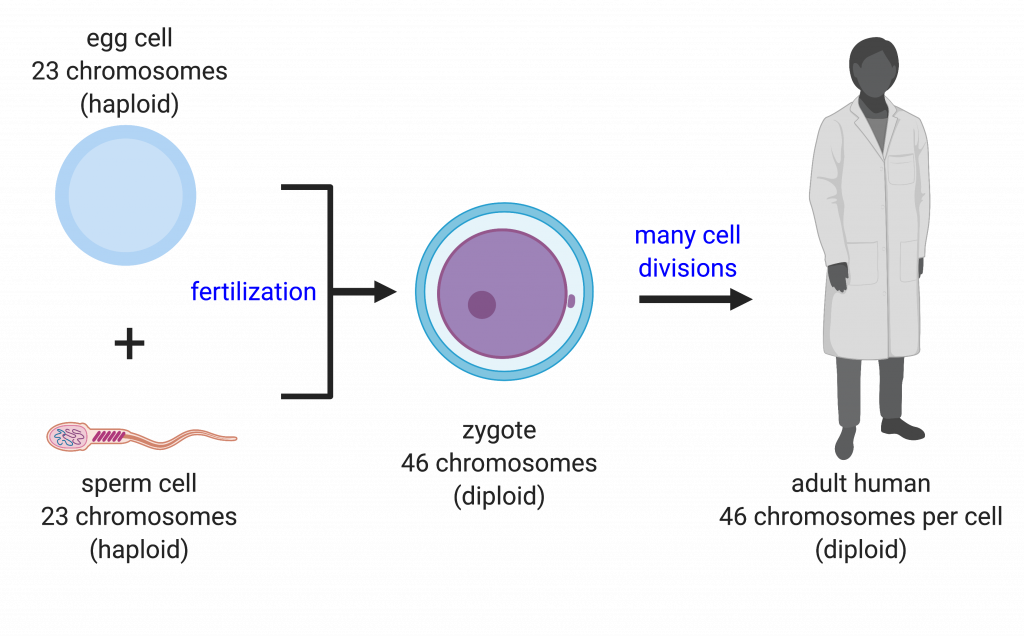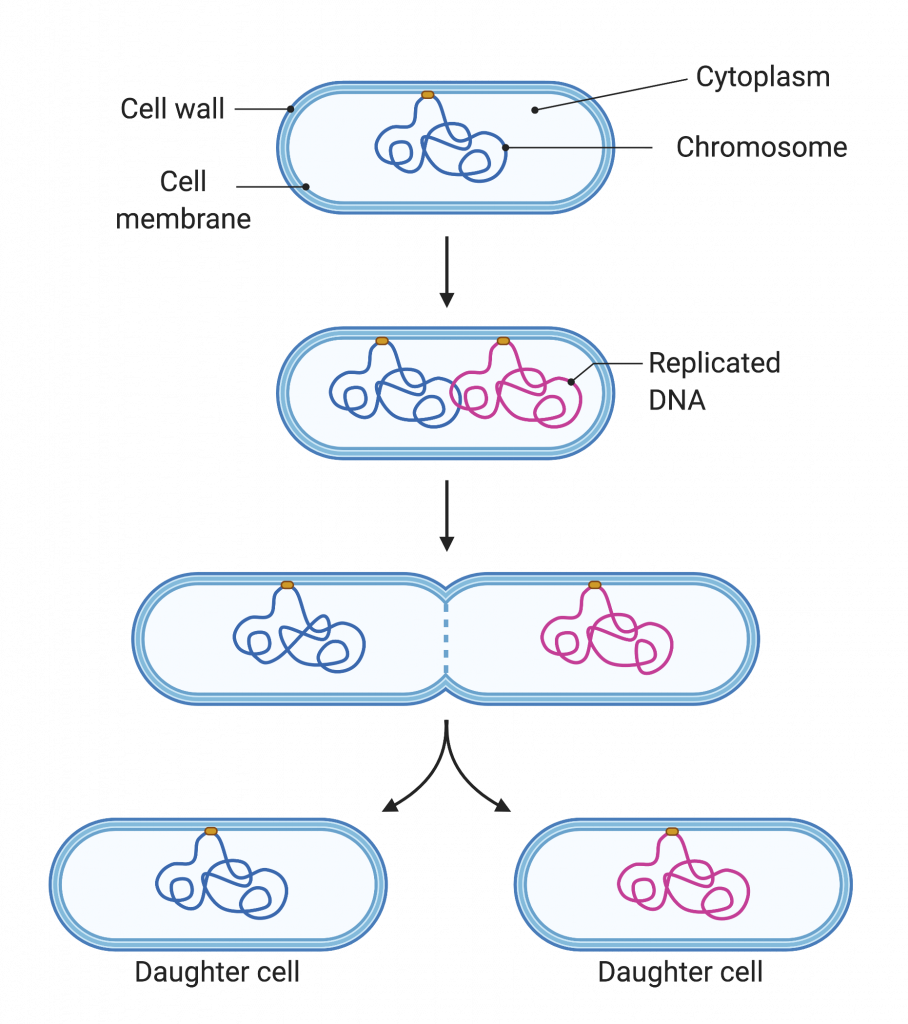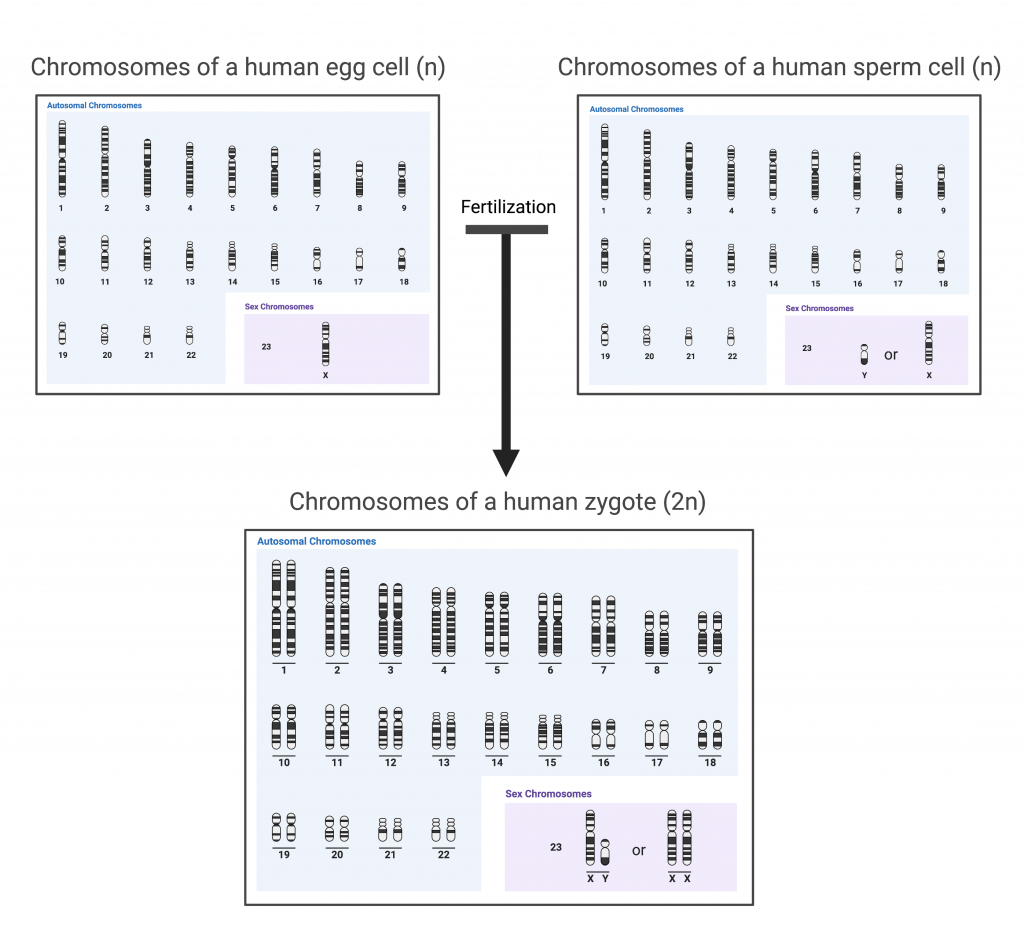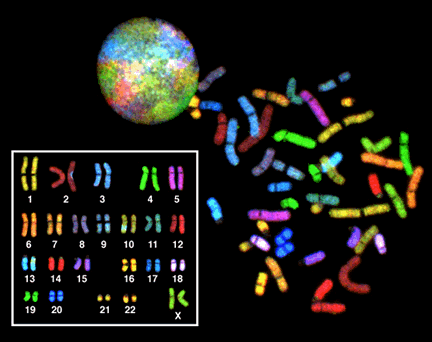16.1 Cell Division and Genomic DNA
A human, like every sexually reproducing organism, begins life as a fertilized egg (embryo) or zygote. In our species, billions of cell divisions subsequently must occur in a controlled manner in order to produce a complex, multicellular human comprising trillions of cells. Thus, the original single-celled zygote is literally the ancestor of all cells in the body.

However, once a human is fully grown, cell reproduction is still necessary to repair and regenerate tissues, and sometimes to increase our size! In fact, all multicellular organisms use cell division for growth and the maintenance and repair of cells and tissues. Cell division is closely regulated, and the occasional failure of this regulation can have life-threatening consequences. Single-celled organisms also use cell division as their method of reproduction.
A cell’s DNA, packaged as one or more double-stranded DNA molecules, is called its genome. In prokaryotes, the genome is composed of a single, double-stranded DNA molecule in the form of a loop or circle. Prokaryotes divide by a type of cell division called binary fission. In this process, the circular chromosome is first replicated, then each daughter chromosome is attached to a different location on the cell membrane. The cell then splits into two daughter cells, each with its own chromosome.

In eukaryotes, the genome consists of several double-stranded linear DNA molecules. Each species of eukaryotes has a characteristic number of chromosomes in the nuclei of its cells. Human body (somatic) cells have 46 chromosomes, while human gametes (sperm or eggs) have 23 chromosomes each. A typical body cell contains two matched or homologous sets of chromosomes (one set from each biological parent)—a configuration known as diploid. (Note: The letter n is used to represent a single set of chromosomes; therefore, a diploid organism is designated 2n.) Human cells that contain one set of chromosomes are called gametes, or sex cells; these are eggs and sperm, and are designated n or 1n, or haploid.

Upon fertilization, each gamete contributes one set of chromosomes, creating a diploid cell containing matched pairs of chromosomes called homologous (“same knowledge”) chromosomes. Homologous chromosomes are the same length and have specific nucleotide segments called genes in exactly the same location, or locus. Genes, the functional units of chromosomes, determine specific characteristics by coding for specific proteins. Traits are the variations of those characteristics. For example, hair color is a characteristic with traits that are blonde, brown, or black, and many colors in between.
Each copy of a homologous pair of chromosomes originates from a different parent; therefore, the two copies of any particular gene might not be identical to one another, although they code for the same characteristic such as “hair color.” The variation of individuals within a species is due to the specific combination of the genes inherited from both parents. Even a slightly altered sequence of nucleotides within a gene can result in an alternative trait. For example, there are three versions of the gene that codes for blood type in humans: sequence A, sequence B, and sequence O. Because all diploid human cells have two copies of the chromosome that determines blood type, the blood type (the trait) of an individual is determined by the two copies of the relevant gene that were inherited by that individual. It is possible for an individual to have two identical copies of a particular gene, one on each copy of the homologous chromosome pair(for example, AA, BB, or OO), or two different copies, such as AB, AO, or BO. The gene responsible for this characteristic is named gene “I” and the different alleles of this gene are named IA, IB, and i.
Apparently minor variations in DNA sequences, such as those that determine blood type, eye color, and handedness, contribute to the natural variation found within a species. It is important to consider that, even though they seem minor, these variations in DNA sequence may be connected with the expression of other traits of which we are not yet aware. However, if the entire DNA sequence from any pair of human homologous chromosomes is compared, the difference is much less than one percent. The sex chromosomes, X and Y, are the single exception to the rule of homologous chromosome uniformity: Other than a small amount of homology that is necessary to accurately produce gametes, the genes found on the X and Y chromosomes are different.

a cell formed by the union of two gametes; the first cell of a new individual
all of the genetic material of a cell or organism
haploid reproductive cell (sperm or egg) that fuses with another haploid cell during fertilization
cell, nucleus, or organism containing two sets of chromosomes (2n)
cell, nucleus, or organism containing one set of chromosomes (n)
chromosomes of the same morphology with the same genes in the same location; diploid organisms have pairs of homologous chromosomes (homologs), with each homolog derived from a different parent
segment of DNA that codes for a functional molecule (usually, a protein)
position of a gene on a chromosome

